A trip to Rajasthan in Feb 2023
<< Just short random notes; some pictures; the blog is to be expanded later. >>
My trip did not cover the entire state of Rajasthan as I had previously visited Udaipur and Mt Abu many years ago. Mt Abu and Udaipur are closer to the southern side of the state and I visited them from Ahmedabad in the 1990s when I went there for a short work project).
On this trip, the primary cities I visited and stayed overnight in hotels were Jodhpur, Jaipur, Jaisalmer, and Bikaner. Also on the way were the popular towns of Pushkar and Ajmer where I did not stay overnight.
Sunday, Feb 26
Started for Jodhpur from Delhi by overnight train.
Boarded the train at Old Delhi Station around 8 pm.
The station seemed so rural and rough.
No inquiry office. No display of any form ( board display or electronic) of the train departures etc.
Only some coolies could guide us. Luckily my sister is more familiar with the system here and helped us out in finding the train platform and compartment!
Train from Delhi to Jodhpur. Delhi train station.
Monday, Feb 27
Reached Jodhpur railway station in the morning after an overnight train from Delhi.
Jodhpur station
It was difficult to coordinate and get our organized tour car driver for the hotels and sightseeing but ultimately it worked out fine.
Deal/contract with tour company my sister made - Car and driver with the itinerary for 5 nights and 6 days plus the tour company did
all the hotel reservations for us.
Pictures of the Hotel Kuchhaman :
Jodhpur sightseeing places visited
-
- The Mehrangarh Fort ; Moti Mahal ; Phool Mahal
- Jaswant Thada
- Umaid Bhawan
- Mandore Garden
- Clock Tower Marketplace in town
Umaid Bhavan::
Umaid Bhawan Palace, located in Jodhpur, Rajasthan, India, is one of the world's largest private residences. A part of the palace is managed by Taj Hotels. It is named after Maharaja Umaid Singh, grandfather of the present owner, Gaj Singh. The palace has 347 rooms and is the principal residence of the former Jodhpur royal family. A part of the palace is a museum.
Mehrangarh fort
Jaswant Thada
The Jaswant Thada is a cenotaph located in Jodhpur, in the Indian state of Rajasthan. It was built by Maharaja Sardar Singh of Jodhpur State in 1899 in memory of his father, Maharaja Jaswant Singh II,[1] and serves as the cremation ground for the royal Rajput family of Marwar.[2]
The cenotaph is built out of intricately carved sheets of Makrana marble. These sheets are extremely thin and polished so that they emit a warm glow when illuminated by the Sun.
The cenotaph's grounds feature carved gazebos, a tiered garden, and a small lake. There are three other cenotaphs in the grounds. The cenotaph of Maharaja Jaswant Singh displays portraits of the rulers and Maharajas of Jodhpur.[3]
Source: https://en.wikipedia.org/wiki/Jaswant_Thada
Mandore Garden :
Tuesday, Feb 28
Started for Jaisalmer for the desert camping stay there. Started around noon by car.
camels on the roadside
camel videos-
Had some stops on the way, primarily stops at -
sisters stopped by at a roadside clay pottery handicrafts seller
Gadsisar Sagar Lake with a temple-
Gadisar Lake also called Gadaria Lake is located in the Jaisalmer district of the Indian state of Rajasthan.[1] It was built by the founder of Jaisalmer, King Rawal Jaisal in 1156 AD[2] and later rebuilt by Gadsi Singh around 1367 AD. This lake is an artificial lake.[3] The lake is located about 1.5 km from Jaisalmer Fort. It is said that this lake once provided water to the entire city. Presently, the water comes in the Gadisar Lake from Indira Gandhi Canal, so it never dries.[4]
Check: https://en.wikipedia.org/wiki/Gadisar_Lake
and
Kuldhara, a ghost village, a historic abandoned town-
Kuldhara is an abandoned village in the Jaisalmer district of Rajasthan, India. Established around the 13th century, it was once a prosperous village inhabited by Paliwal Brahmins. It was abandoned by the early 19th century for unknown reasons, possibly because of dwindling water supply, an earthquake, or as a local legend claims, because of the atrocities by the Jaisalmer State's minister Salim Singh.
Over years, Kuldhara acquired reputation as a haunted site, and the Government of Rajasthan decided to develop it as a tourist spot in the 2010s.
Check: https://en.wikipedia.org/wiki/Kuldhara
Camel safari ride at Prince camping site at Sam Sand Dunes,
and watched Sunset at the sand dunes.
Jaisalmer ![]() pronunciation (help·info), nicknamed "The Golden city", is a city in the Indian state of Rajasthan, located 575 kilometres (357 mi) west of the state capital Jaipur. The town stands on a ridge of yellowish sandstone and is crowned by the ancient Jaisalmer Fort. This fort contains a royal palace and several ornate Jain temples. Many of the houses and temples of both the fort and of the town below are built of finely sculptured sandstone. The town lies in the heart of the Thar Desert (the Great Indian Desert) and has a population, including the residents of the fort, of about 78,000. It is the administrative headquarters of Jaisalmer District. Jaisalmer was once the capital of Jaisalmer State.
pronunciation (help·info), nicknamed "The Golden city", is a city in the Indian state of Rajasthan, located 575 kilometres (357 mi) west of the state capital Jaipur. The town stands on a ridge of yellowish sandstone and is crowned by the ancient Jaisalmer Fort. This fort contains a royal palace and several ornate Jain temples. Many of the houses and temples of both the fort and of the town below are built of finely sculptured sandstone. The town lies in the heart of the Thar Desert (the Great Indian Desert) and has a population, including the residents of the fort, of about 78,000. It is the administrative headquarters of Jaisalmer District. Jaisalmer was once the capital of Jaisalmer State.
Check: https://en.wikipedia.org/wiki/Jaisalmer
We stayed in tents at the campsite
Song and dance show at campsite. Singer and musician performing Rajasthani folk as well as popular songs.
A woman performer dancing on a bed of nails with a stack of pots on top of her head.
Wednesday, Mar 01
-
Jaisalmer Fort with Markets and streets and housing inside.
Entrance to the Fort.
Jaisalmer Fort is situated in the city of Jaisalmer, in the Indian state of Rajasthan. It is believed to be one of the very few "living forts" in the world (such as Carcassonne, France), as nearly one fourth of the old city's population still resides within the fort.[1] For the better part of its 860-year history, the fort was the city of Jaisalmer. The first settlements outside the fort walls, to accommodate the growing population of Jaisalmer, are said to have come up in the 17th century.[1]
Jaisalmer Fort is the second oldest fort in Rajasthan, built in 1156 AD by the Rawal (ruler) Jaisal from whom it derives its name, and stood at the crossroads of important trade routes (including the ancient Silk road).[1]
The fort's massive yellow sandstone walls are a tawny lion colour during the day, fading to honey-gold as the sun sets, thereby camouflaging the fort in the yellow desert. For this reason it is also known as the Sonar Quila or Golden Fort.[2] The name Sonar Quila (Bengali for Golden Fortress) was popularized by tourists after famous Bengali film of the same name, that was shot in this fort by eminent filmmaker Satyajit Ray. The fort stands amidst the sandy expanse of the great Thar Desert on Trikuta Hill, hence also known as Trikutgarh. It is today located along the southern edge of the city that bears its name; its dominant hilltop location making the sprawling towers of its fortifications visible for many miles around.[3]
In 2013, at the 37th session of the World Heritage Committee held in Phnom Penh, Cambodia, Jaisalmer Fort, along with five other forts of Rajasthan, was declared a UNESCO World Heritage Site under the group Hill Forts of Rajasthan.
Stone. cannon balls still around.
Haveli ( palatial houses) visits
Patwon Ki Haveli ; Salim Singh Ki Haveli; Nathmal Ki Haveli
Started for Bikaner in the afternoon. 5.5 hours drive.
Thursday, Mar 02
Bikaner -

- Junagarh Fort.
Beautiful artistry with expensive jewels and marble etc... a few out of the lots of pics to upload..
Junagarh Fort is a fort in the city of Bikaner, Rajasthan, India. The fort was originally called Chintamani and was renamed Junagarh or "Old Fort" in the early 20th century when the ruling family moved to Lalgarh Palace outside the fort limits. It is one of the few major forts in Rajasthan which is not built on a hilltop. The modern city of Bikaner has developed around the fort.[1][2][3]
The fort complex was built under the supervision of Karan Chand, the Prime Minister of Raja Rai Singh, the sixth ruler of Bikaner, who ruled from 1571 to 1611 AD. Construction of the walls and associated moat commenced in 1589 and was completed in 1594. It was built outside the original fort of the city (the first fort built by Rao Bikaji), about 1.5 kilometres (0.93 mi) from the city centre. Some remnants of the old fort are preserved near the Lakshmi Narayan temple.[1][4][5]
Historical records reveal that despite the repeated attacks by enemies to capture the fort, it was not taken, except for a lone one-day occupation by Kamran Mirza. Kamran was the second son of the Mughal Emperor Babur who attacked Bikaner in 1534, which was then ruled by Rao Jait Singh.[6]
The 5.28 hectares large fort precinct is studded with palaces, temples and pavilions.[2] These buildings depict a composite culture, manifest in the mix of architectural styles.[7]
Check : https://en.wikipedia.org/wiki/Junagarh_Fort
- Lalgarh Palace. ( small museum of personal staff... not impressive)
Karni Mata Temple.
A temple for Goddess but is a Rat-infested temple.
Karni Mata Temple of Deshnoke (Hindi: करणी माता मंदिर), also known as Madh Deshnoke, is a prominent Hindu temple dedicated to Karni Mata at the town of Deshnoke, located 30 km south of Bikaner, in Rajasthan. It has become the most important pilgrimage site for devotees of Charani sagatis after access to Hinglaj was restricted following the partition of India. The temple is also a popular destination for tourists and pilgrims and is renowned, both in India and internationally, mistakenly as the “Temple of Rats” due to the numerous black rats (Rattus rattus) known as kābā which are considered holy and treated with utmost care by the devotees but the temple actually belongs to the deity Karni Mata and hence the name "Karni Mata Temple". This is sometimes upheld as exemplary of an "environmentally conscious Hindu ethos". The temple draws visitors from across the country for blessings, as well as curious tourists from around the world.[1][2]
The temple was originally constituted 500 years ago, around 1530 CE, after the mahaprayan of Karni Mata. It initially began with the inner sanctum covered by the dome and grew in size with constructions being added by the devotees throughout the centuries.
Check: https://en.wikipedia.org/wiki/Karni_Mata_Temple
reached Pushkar ( 4.5 hours from Bikaner/) around 5 pm or so, and visited the one and only Brahma temple in the world.
Pushkar is a city, near Ajmer City and headquarters of Pushkar tehsil in the Ajmer district in the Indian state of Rajasthan. It is situated about 10 km (6.2 mi) northwest of Ajmer and about 150 kilometres (93 mi) southwest of Jaipur.[1] It is a pilgrimage site for Hindus and Sikhs. Pushkar has many temples. Most of the temples and ghats in Pushkar are from the 18th century and later, because many temples were destroyed during Muslim conquests in the area.[1][2] Subsequently, the destroyed temples were rebuilt. The most famous among Pushkar temples is the red spired Brahma Temple. It is considered a sacred city by the Hindus particularly in Shaktism,[1][3] and meat and eggs consumption are forbidden in the city.[4] Pushkar is located on the shore of Pushkar Lake, which has many ghats where pilgrims bathe.[3]
Check: https://en.wikipedia.org/wiki/Pushkar
later we drove to Ajmer Sharif Darga.
Reached there in the evening.
The place was super crowded with people squeezed into the Mosque/Darga building ...
literally thousands of people with bodies squeezed and squished against each other. completely as a cluster! Not recommended if at all claustrophobic!
Ajmer Sharif Dargah (also Ajmer Dargah Shareef, Ajmer Sharif or Dargah Sharif)[1] is a Sufi Tomb (dargah) of the revered Sufi saint, Khawaja Moinuddin Chishti, located at Ajmer Shareef, Rajasthan, India. The Shrine Has Hazrat's Blessed Grave (Maqbara).[2]
Check: https://en.wikipedia.org/wiki/Ajmer_Sharif_Dargah
From there we drove to Jaipur and reached there around 11 PM.
Friday, Mar 03
Jaipur
Nahargarh Fort - relatively empty not much impressive
Jaigarh fort - biggest cannon; Bhulbhulaiyya
Amer / Amber Fort -- Sheesh Mahal . Jaipur.
Sheesh Mahal at the Amer Fort in Jaipur
Dessert at Amber restaurant on top of the Amer fort
Evening Ganesh Temple and Birla Temple in Jaipur.
Beautiful Krishna stained glass art at the Birla Temple in Jaipur
Saturday, Mar 04
Jaipur
Albert Museum
Jaipur Palace,
Jantar Mantar at Jaipur.
Krishna Temple- Holi celebration
<. pics>
Hawa Mahal , Jaipur (outside view)
( we were told the inside view from the other side is nothing extraordinary, rather more of a old normal building)
In the evening around 5 pm took the Shatabdi Express train to Delhi ( reached around 11 PM with 1 hr to just get a platform for the train,) Then Uber and taxi, etc ordeal as the local drivers pretty much surrounded us and the Uber app, etc had issues.
Stayed in Delhi, at the Safdurjung Enclave Block 4 Inn called Bfour.
I started feeling sick in the afternoon due to food poisoning. Most likely due to the "lassi" that I had.
:((








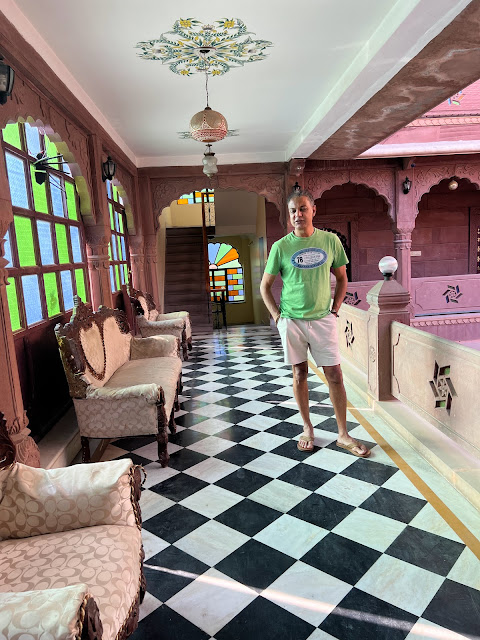












































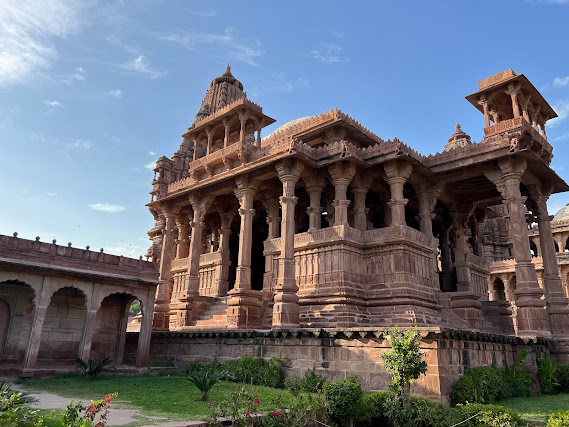


















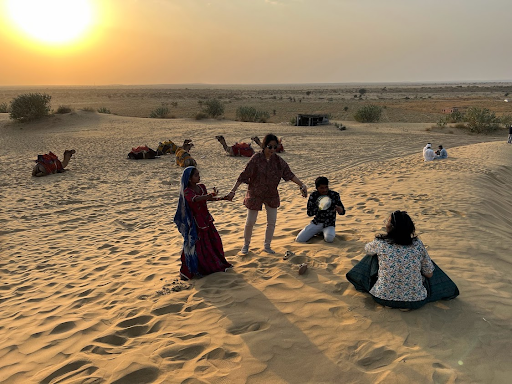

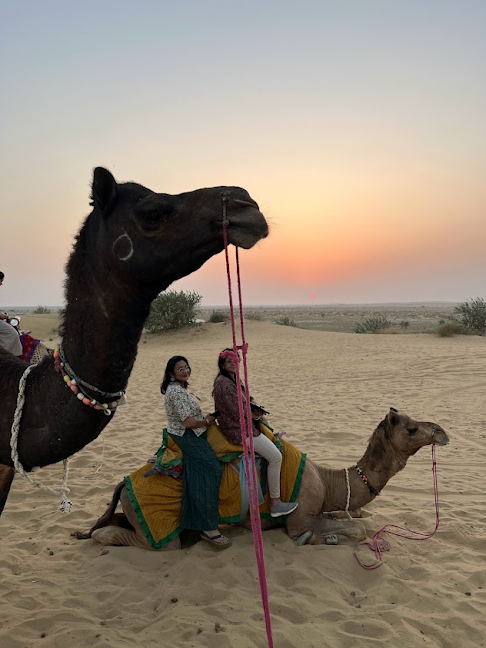

























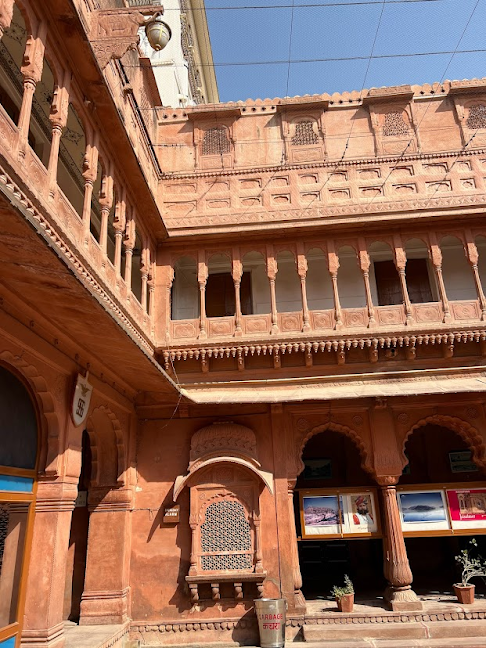




























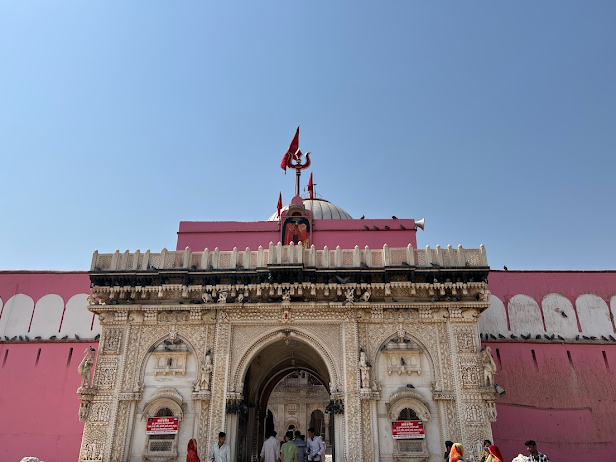


















































Comments